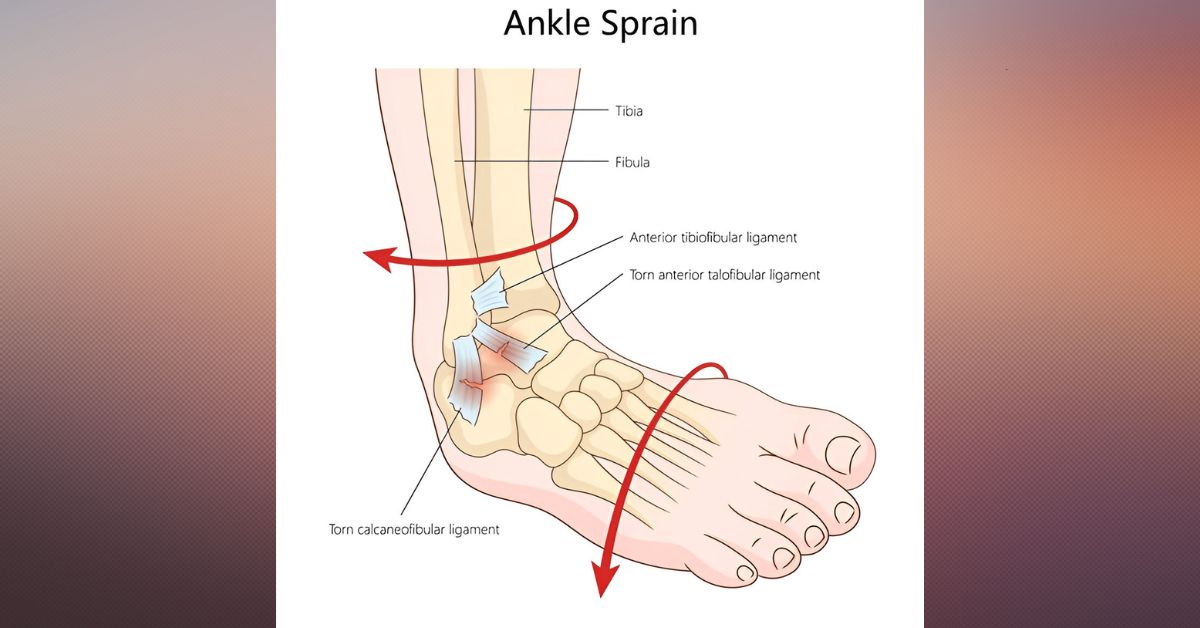Introduction
Lateral ankle sprains account for nearly 40% of all sports-related injuries and up to 20% of injuries in the general population. Despite being labeled “mild,” up to 33% of patients experience chronic instability, impaired proprioception, and repeat injuries. Evidence-based physiotherapy is central to both acute care and long-term recovery.
Anatomical & Functional Overview
The most commonly injured structure is the anterior talofibular ligament (ATFL), often accompanied by injury to the calcaneofibular ligament (CFL). Grades I–III are classified by the extent of ligament disruption.
Key Treatment Goals in Physiotherapy
- Control inflammation and restore mobility
- Prevent mechanical and functional instability
- Retrain neuromuscular control and proprioception
- Return to sport/activity with minimal reinjury risk
RCT Evidence Supporting Physiotherapy
1. Manual Therapy + Exercise Outperforms Usual Care
- Doherty et al. (2016) synthesized evidence across multiple RCTs showing that patients receiving manual therapy and structured rehab exercises had superior functional recovery and lower recurrence rates than those receiving usual care or immobilization alone.
2. Balance and Proprioceptive Training Prevent Reinjury
- Hupperets et al. (2009) conducted an RCT on 522 athletes and showed a 35% reduction in recurrence among those performing 8 weeks of balance training, especially in previously injured individuals.
3. Early Mobilization Is Key
- van Os et al. (2006) found that early weight-bearing and functional rehabilitation led to faster return to work and activity compared to prolonged rest or immobilization.
Clinical Protocol: Our Physiotherapy Approach Includes
- Manual therapy to restore dorsiflexion and subtalar mobility
- Progressive resistance exercises for peroneals, tibialis anterior/posterior
- Balance and perturbation training (e.g., wobble board, single-leg stance)
- Return-to-sport testing (Y-Balance Test, hop tests)
- Footwear/orthotic recommendations as needed
Referral Considerations
- Ankle sprain not improving after 5–7 days of self-management
- Recurring ankle sprains or perceived instability
- Functional limitations affecting sport, gait, or occupational demands
- Need for safe return-to-play clearance or taping/bracing recommendations
Conclusion
Ankle sprains are deceptively disabling injuries with a high rate of recurrence if not rehabilitated appropriately. Physiotherapy—supported by robust RCTs—is a front-line treatment to ensure complete ligamentous healing, neuromotor recovery, and long-term joint protection.
We welcome referrals for both acute ankle sprains and chronic instability to support optimal patient outcomes.
References:
Doherty, C., Bleakley, C., Delahunt, E., & Holden, S. (2016). Treatment and prevention of acute and recurrent ankle sprain: An overview of systematic reviews with meta-analysis. British Journal of Sports Medicine, 51(2), 113–125. https://doi.org/10.1136/bjsports-2016-096178
Hupperets, M. D. W., Verhagen, E. A. L. M., van Mechelen, W. (2009). Effect of unsupervised home-based proprioceptive training on recurrences of ankle sprain: A randomized controlled trial. American Journal of Sports Medicine, 37(3), 486–493. https://doi.org/10.1177/0363546508326981
van Os, A. G., Bierma-Zeinstra, S. M. A., Verhagen, A. P., de Bie, R. A., Luijsterburg, P. A. J., Koes, B. W. (2006). Comparison of conventional treatment and supervised exercise for ankle sprain. British Journal of General Practice, 56(527), 208–212. https://bjgp.org/content/56/527/208

